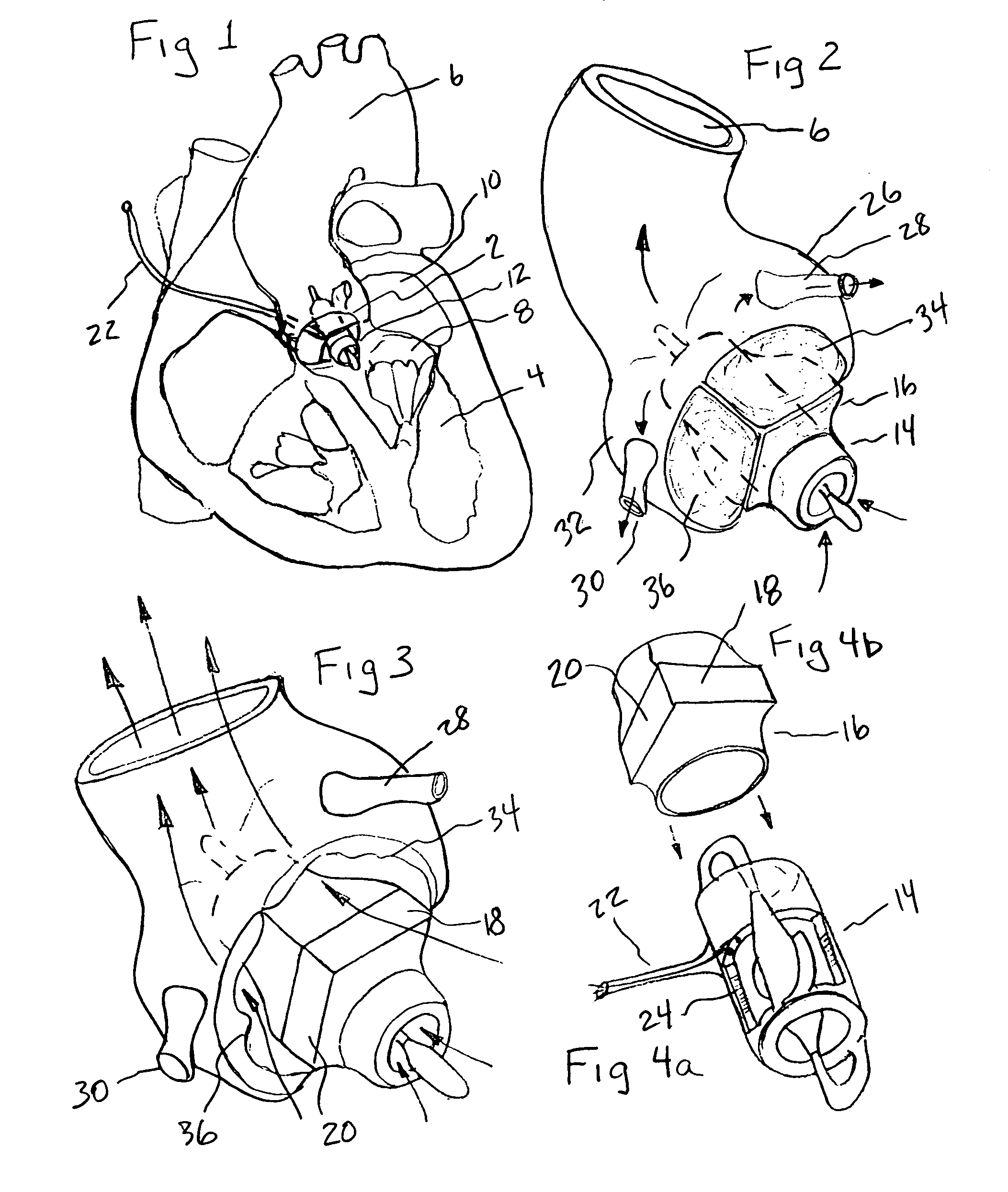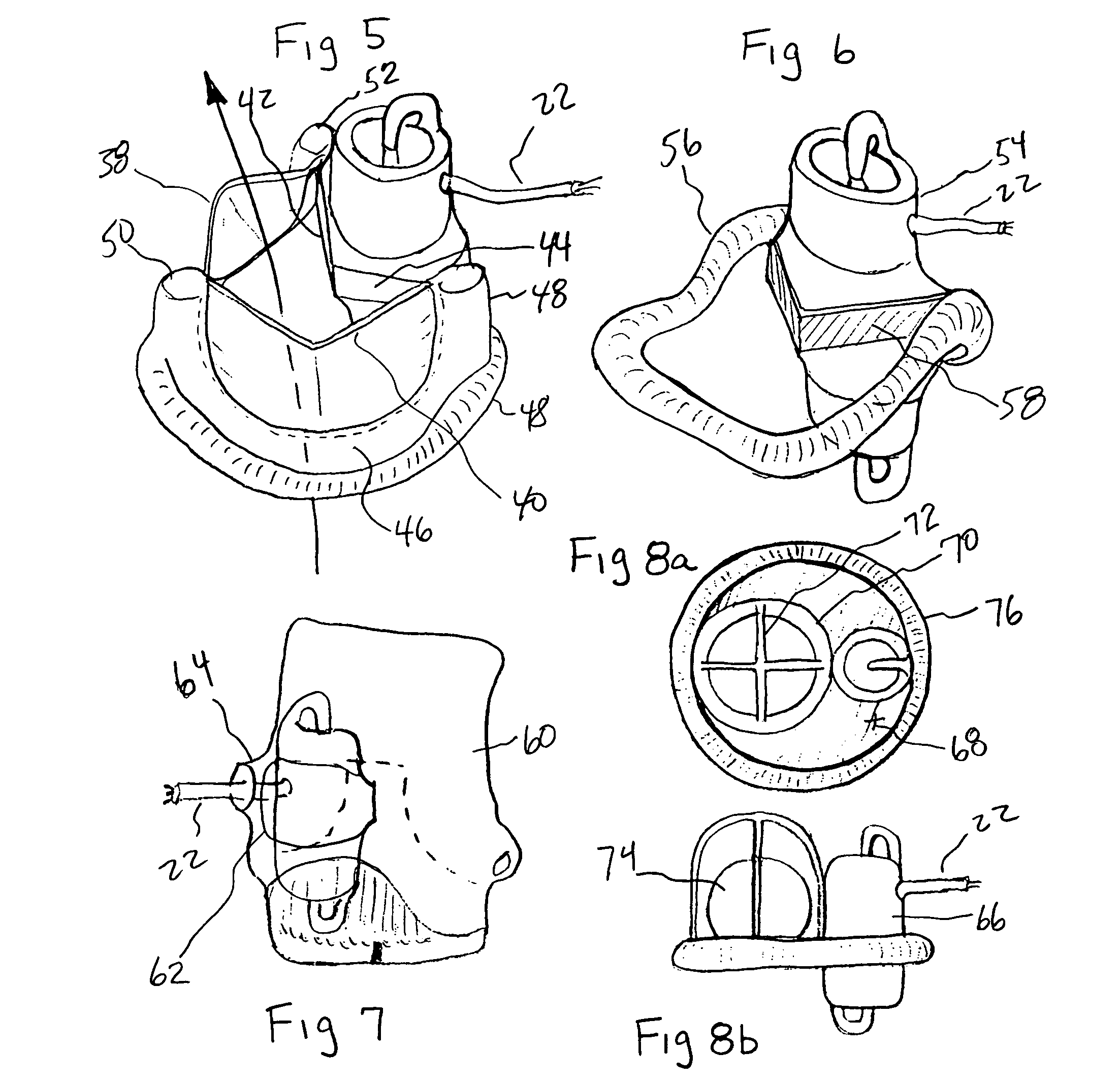Minimally invasive transvalvular ventricular assist device
a technology of ventricular assist and minimal invasiveness, which is applied in the direction of circulatory assistance devices, blood pumps, therapy, etc., can solve the problems of poor reliability, no device developed to date has been recognized by surgeons, cardiologists, and the public, and none has yet reduced the incidence of serious adverse events to a practically negligible rate. , to achieve the effect of high miniaturization and effectiv
- Summary
- Abstract
- Description
- Claims
- Application Information
AI Technical Summary
Benefits of technology
Problems solved by technology
Method used
Image
Examples
Embodiment Construction
[0032]The present invention provides a miniature blood pump which fits within the cross sectional area of one of the three leaflets of either the aortic or pulmonary valve, with the pump inlet side having unobstructed communication with the ventricular cavity and the pump outlet located in the aorta or pulmonary artery distal to the valve leaflets. Referring to FIG. 1 which is a cut away drawing of the heart with the anterior portion of the left and right ventricles removed, the aortic valve 2, is located between the left ventricle 4, and the aorta 6. The mitral valve 8, is located between the left ventricle 4, and the left atrium 10. A transvalvular VAD 12, is implanted into the non-coronary sinus of the aortic valve, which is located adjacent to the mitral valve 8. In the preferred embodiment it is comprised of a miniature axial flow pump 14, best seen in FIG. 4a, and a shaped anatomic adaptor 16, best seen in FIG. 4b. The anatomic adaptor has two facet like surfaces 18, 20, that ...
PUM
 Login to View More
Login to View More Abstract
Description
Claims
Application Information
 Login to View More
Login to View More - R&D
- Intellectual Property
- Life Sciences
- Materials
- Tech Scout
- Unparalleled Data Quality
- Higher Quality Content
- 60% Fewer Hallucinations
Browse by: Latest US Patents, China's latest patents, Technical Efficacy Thesaurus, Application Domain, Technology Topic, Popular Technical Reports.
© 2025 PatSnap. All rights reserved.Legal|Privacy policy|Modern Slavery Act Transparency Statement|Sitemap|About US| Contact US: help@patsnap.com



